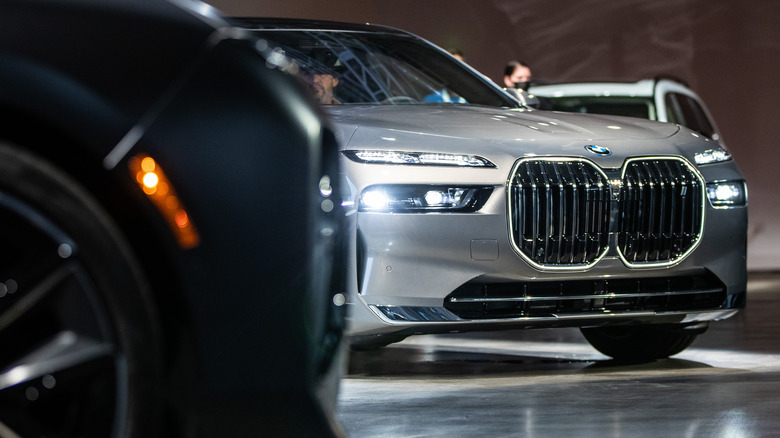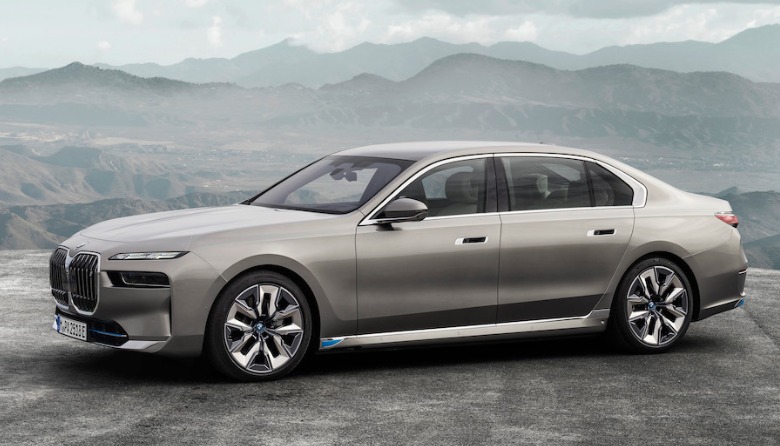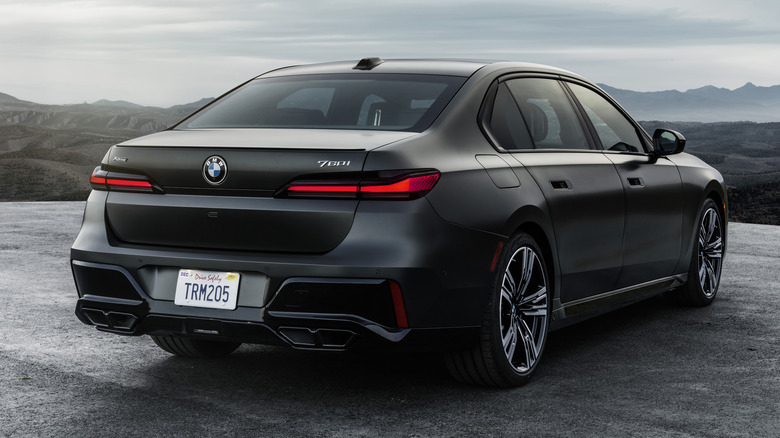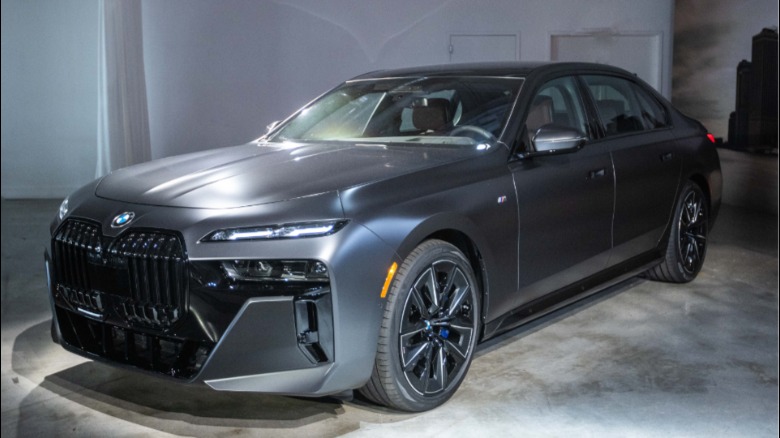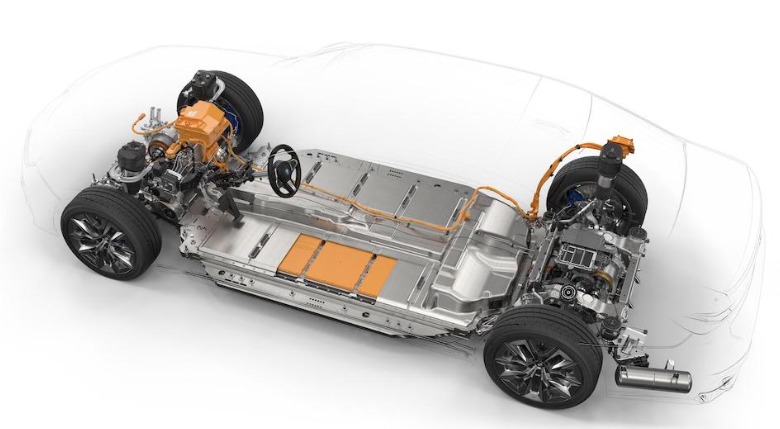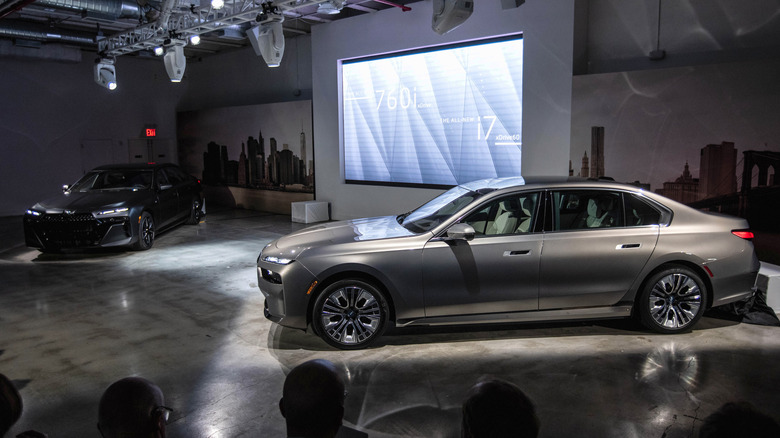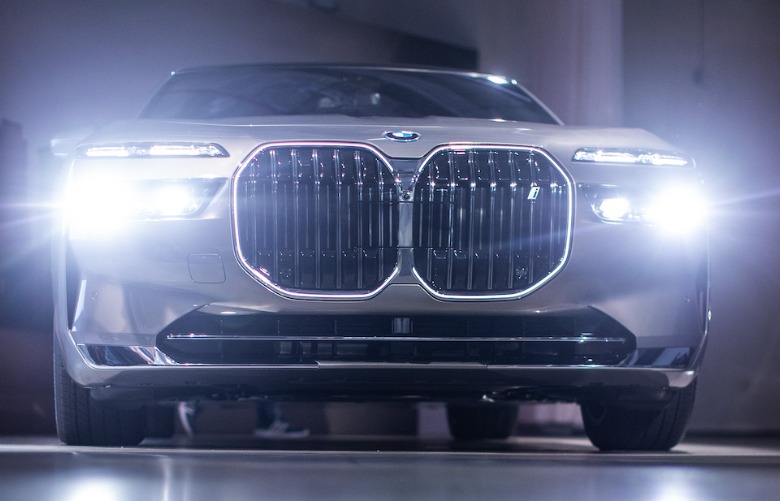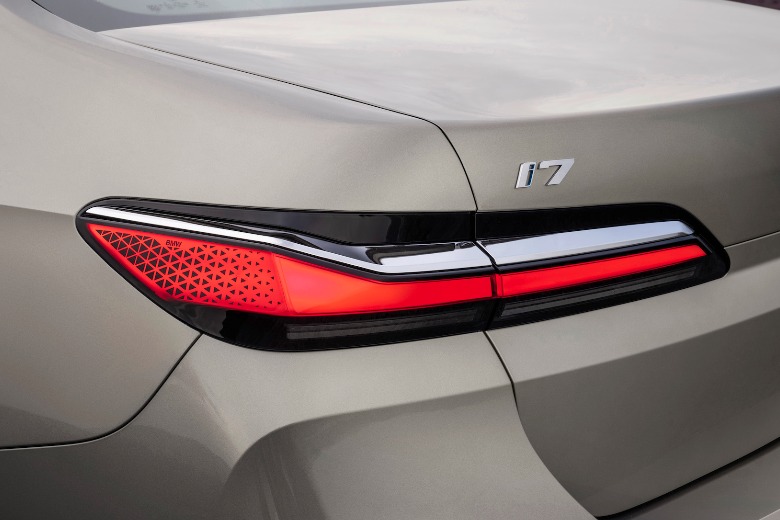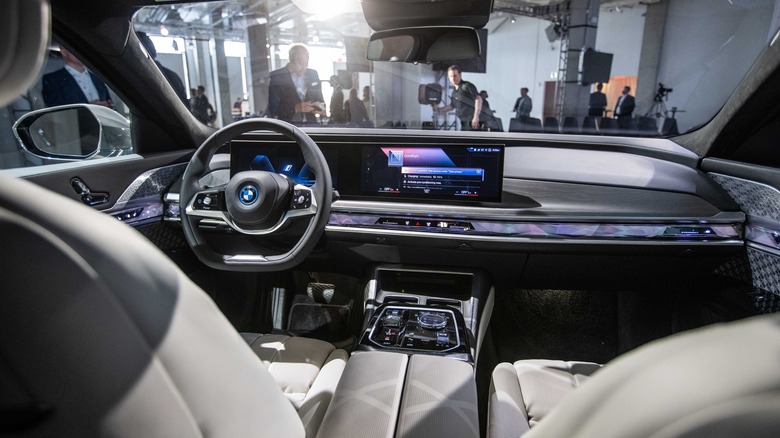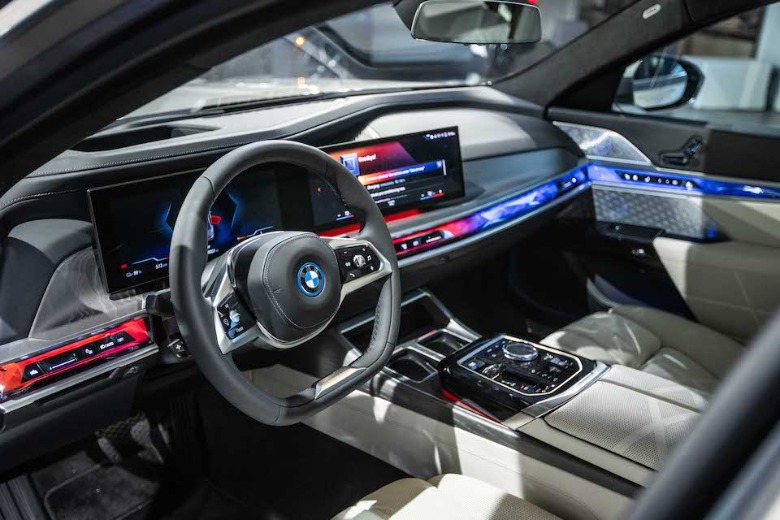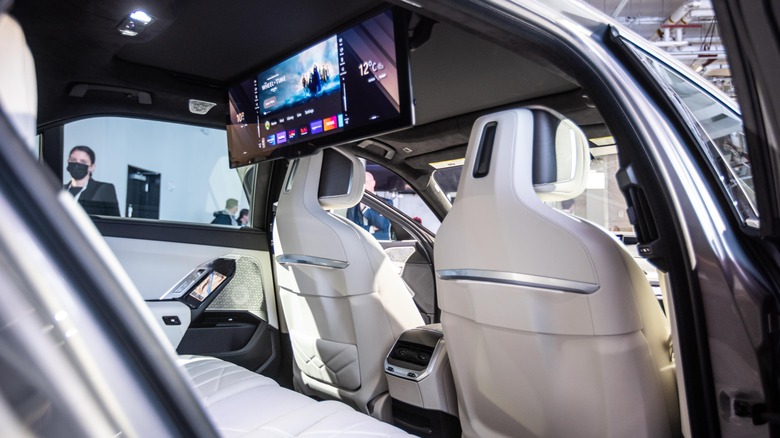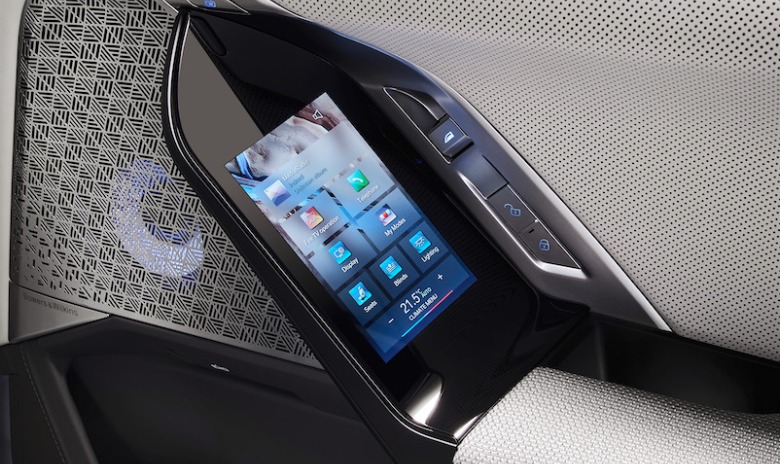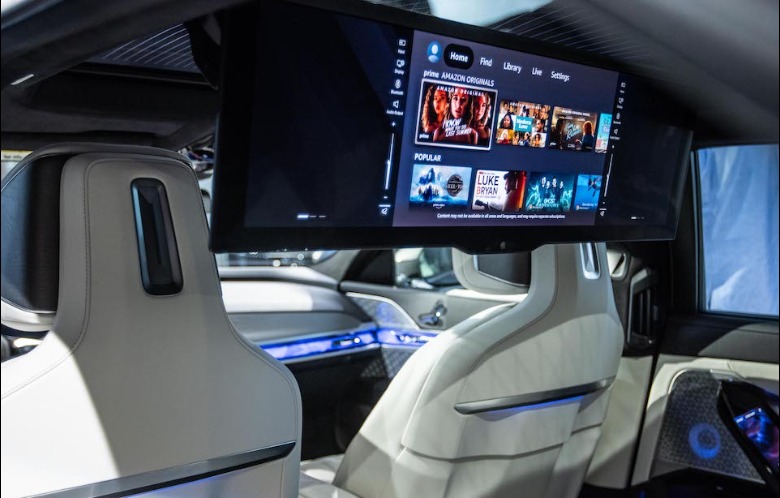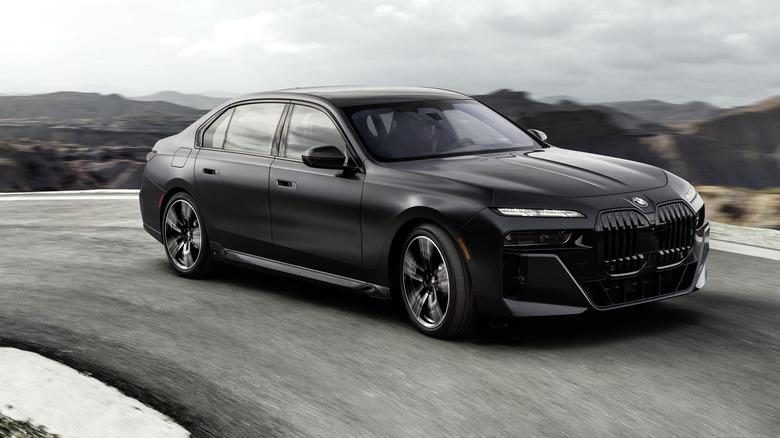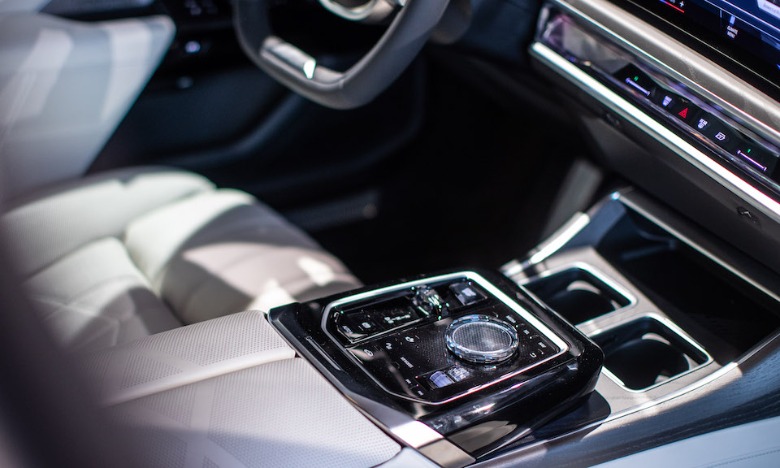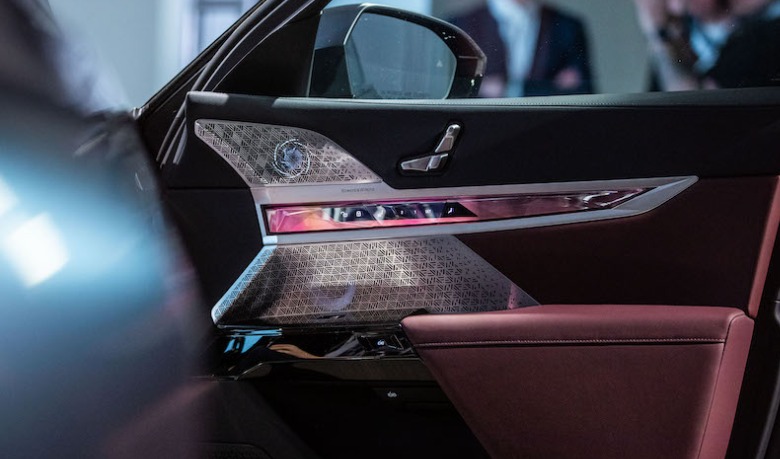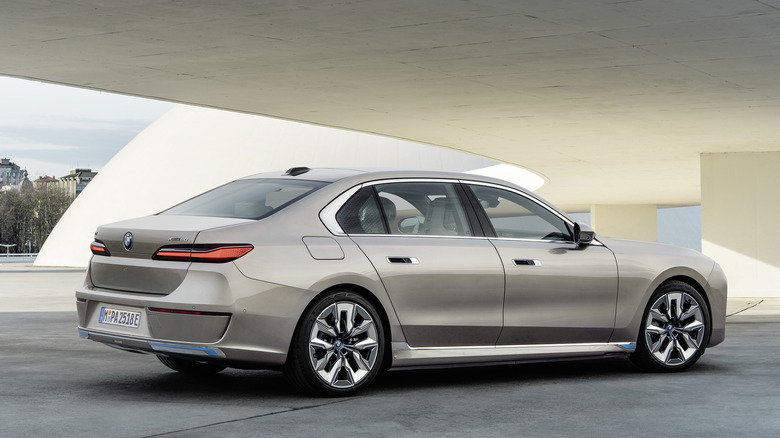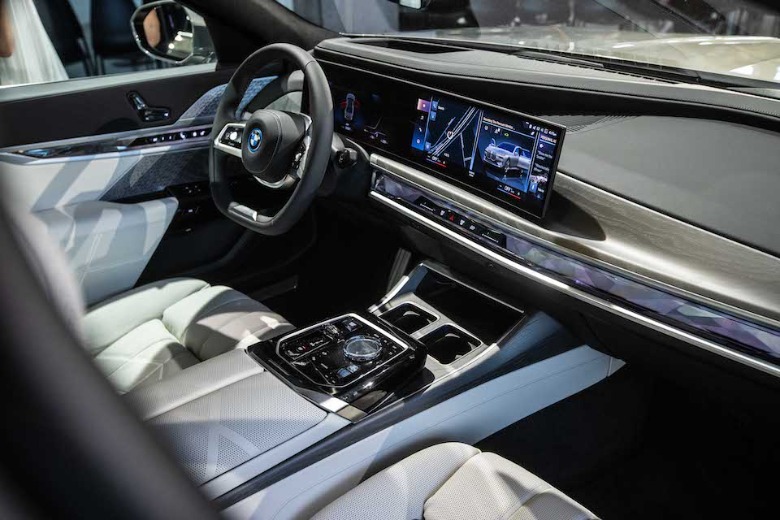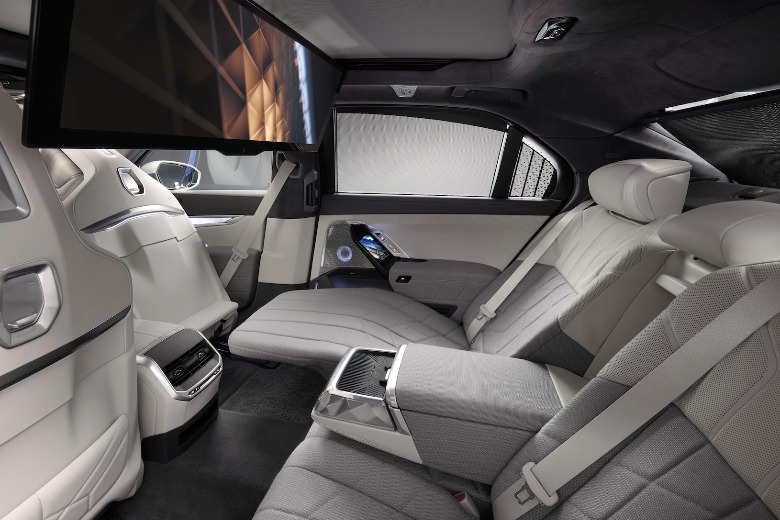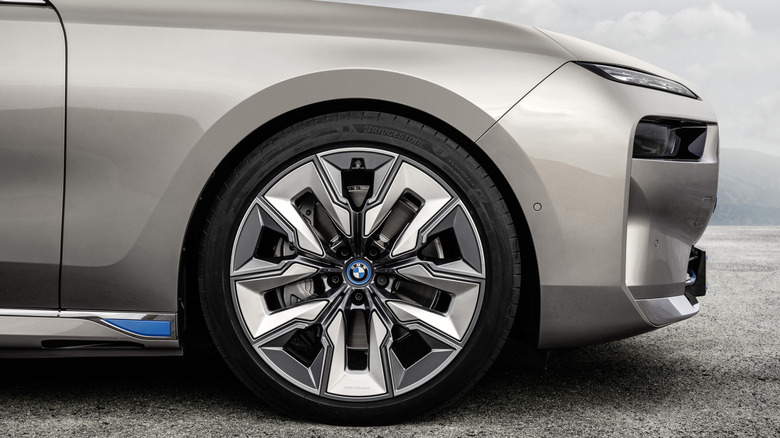2023 BMW 7 Series Revealed With Fully-Electric i7 Flagship And Wild Tech
The 7 Series has embodied every facet of BMW's character for nearly 50 years. In that time, the flagship vehicle has been a showcase for the Bavarian brand's level of technology, style and performance. This year, the full-sized luxury sedan will enter — conveniently — its seventh generation, and while its position as the pinnacle of BMW's offerings won't change, everything else will.
New style, new tech and a new V8 engine only scratches the surface of that the next generation 7 Series brings. Oh, and did we mention it's available as a fully electric vehicle? Meet the i7, BMW's latest benchmark.
Lucky Numbers
The all-new 2023 BMW 7 Series will initially have three models available at launch. First will be the 2023 740i, powered by a 3-liter twin-turbo inline six-cylinder engine. It generates 375 horsepower and 383 pound-feet of torque. Both the I6 and V8 versions include a 48-volt mild hybrid system that increases efficiency, among other things, but it can also boost the torque output to 398 pound-feet in brief bursts. All told, the 740i should get up to 60 mph from a standstill in a flat five seconds.
Second is the 2023 BMW 760i xDrive which features a brand new 4.4-liter twin-turbo V8. It borrows designs developed for BMW's motorsports program, giving it a new exhaust manifold, sharper turbocharging and more efficient oil cooling. This provides 536 horsepower and peak torque of 553 pound-feet to play with, getting the Bimmer up to 60 mph in 4.2 seconds. It's married to an eight-speed steptronic sport transmission which routes power to all four wheels thanks to the xDrive AWD setup.
Finally, the 7 Series goes fully electric with the 2023 i7 xDrive60. Two motors provide a combined output of 536 horsepower and 549 pound-feet of torque, launching the luxury sedan from 0 to 60 in 4.5 seconds. BMW states that the i7 is capable of providing approximately 300 miles of range on a full battery. It's worth noting that the 7 Series was built from the ground up with the i7 in mind, and that it's not a compromise nor an afterthought; it's meant to be top of the line from the start.
High-roller
As a full-size luxury sedan, the 7 Series is meant to make a statement, and having seen it up close, we can say that it does so loud and clear. First off, the 7's expanded dimensions give it quite an imposing presence. It's over five inches longer and a couple inches taller and wider than the outgoing car, and that was hardly small. This and the monolithic surface design makes 7 Series look like an ingot of an exotic metal with wheels.
Up front sits the signature BMW kidney grille in its current, most controversial form. BMW has made sure to illuminate the surrounding shape, too, just in case it went without notice. Headlights have been divided into two pieces, the most distinct being the upper, narrow crystal-cut running headlights that give the front facia a distinct, sharp appearance. The lower units house the hi-and-low beam lamps that try to be discreet until needed. It's something we've seen on the 2023 X7, and it's likely to prompt almost as many arguments as the grille will.
This sharpness is continued in the rear, where narrow LED lamps sit high across the 7 Series' corner flank. The rear maintains the signature — if slightly more subtle — boot lid bump and quad exhaust tips, just so long as it's a version of the 7 Series that actually emits exhaust.
Executive suite
On the inside is where most of the bells and whistles are featured and, as a technology showcase, there are many to be found. With this new generation, BMW has been aggressive in pushing the envelope in terms of both design and gadgetry.
When it comes to style, the elegance is in its simplicity. The number of hard buttons have been reduced, allocated to the touchscreen, or moves to the "interaction bar," which blends design with ambient lighting and functioning inputs. It's a touch sensitive strip, which runs along the width of the dash and houses controls for climate control, ventilation, and the hazard lights. Overall, the interior is replete with premium materials paired with multifaceted design elements and abundant ambient lighting.
Screens in front, screens above, screens to the side
The true centerpiece is the floating curved display that houses the 12.3-inch driver display and the 14.9-inch control screen for everything else. It's powered by the latest-generation iDrive 8 software and is supported by substantial processing and connectivity hardware. With over the air updates, BMW plans to keep the 7 Series as up-to-date as possible, particularly when it comes to the i7's power management. As they see it, the only limitations are the hardware, and it's not their intention to engineer any obsolescence within them from day one.
In the back, plush, first-class-like seating is flanked by two 5.5-inch digital touchscreens, one integrated into each door. These give the rear occupants control over several comfort and entertainment features, from climate control to media selection to seat massage functions.
The rear is also home to the 7 Series' most unique option, the 31.3-inch Theater Screen. Previewed at CES, this ceiling-mounted 8K display lowers in place to give the rear occupants a cinematic experience that's never before been offered in a luxury sedan. It's matched by a Bowers & Wilkins Diamond Surround Sound system and has built-in Amazon Fire TV functionality for easier content streaming over the car's embedded 5G connection.
On the strip
Going for a ride in the new 7 Series sounds luxurious, but as a BMW, the driving dynamics are paramount. Increased body rigidity, larger wheels and wider tracks improve stability and encourage precise maneuvers for all versions of the 7 Series. All versions of the car feature a two-axle adaptive air suspension with electronically controlled dampers and automatic self-leveling. This feature is a blessing for anyone who has to deal with steep parking lot ramps or areas with rough surfaces.
When it comes to performance, the 7 Series hunkers down for high-speed stability. Rear wheel steering, standard on all versions except the 740i, assist in cornering precision at speed, as well as maneuvering the large luxury sedan around tight parking areas. An optional Autobahn Package brings active roll stabilization to the table, using a 48V electric motor to counteract body roll for both improved handling and increased passenger comfort.
As one would expect, there is an abundance of driver assists and safety technology on hand in the 7 Series. Front collision warning, lane departure warnings and city collision mitigation all work to make passengers and pedestrians safe. Highway assistant, an optional extra, brings a level of automation to high speed highway cruising at up to 80 mph. It's a hands-on assist meant to make the drive easier, not tackle things on it's own, mind.
All-in on electric: BMW i7
The first all-electric 7 Series brings all of the above to the table in a zero-emission package. It utilizes the fifth generation of BMW eDrive technology with drive units at both axles and a high-voltage battery. With 255 hp being delivered to the front and 308 hp to the rear, the i7 has enough grunt to lay down 549 pound-feet of torque in an instant. Though limited to 149 mph, the i7 should satisfy drivers who like to go heavy on the rightmost pedal.
Like the iX SUV and i4 sedan, the adaptive energy recuperation system can be found on the i7. If you've ever experienced it, it's a very effective function that smooths out one of the rougher parts of EV driving: namely, the unsettling jerk of battery regeneration. This system reads the surroundings to determine when, and with what force, the car activates the regenerative system.
Speaking of charging, the software from the previous "i" models has been updated for the i7. It's been adjusted to ensure the charging rate drops off in a smoother manner, rather than sharply when the charge percentage reaches a high level, a universal issue for BEVs that make topping off the last bit of the battery a challenge.
Charge levels and estimations are even tied into the navigation system in the i7. Based on the car's current estimated range as well as real-time data, the i7 will determine the optimal route to follow, and taking charging stations along the way into account. Given that there's 300 miles of estimated range on tap — with BMW basing that on the EPA test cycle, rather than the more generous WLTP cycle — the i7 should have little trouble getting drivers where they need to go. When it's time to charge up, the i7 is equipped with a combined charging unit for level 2 and 3 chargers. At a DC fast charger, the BMW can recover as much as 80 miles in ten minutes of charge thanks to 195 kW support. Included with the price of the i7 is three years of unlimited charging at Electrify America stations.
Cash out
We've only scratched the surface of what the new 7 Series has to offer, but we'd be remiss if we didn't mention the available M Sport and M Sport professional packages. These touches add features like M-specific geometry on the front apron to give it a more sporty and aggressive look. The packages add unique aerodynamic wheels, a flat-bottomed steering wheel and all the M-badges you can wish for. A Shadowline trim smokes out some of the more shiny parts, and that includes the kidney grille and its illuminated profile.
Expect the BMW 7 Series to arrive in the US at the end of the year. Prices for all models start at $93,300 + $995 destination for the 740i, $113,600 + $995 destination for the 760i xDrive, and $119,300 + $995 destination for the i7 xDrive60. Pre-orders for the all-electric 7 Series open today.
